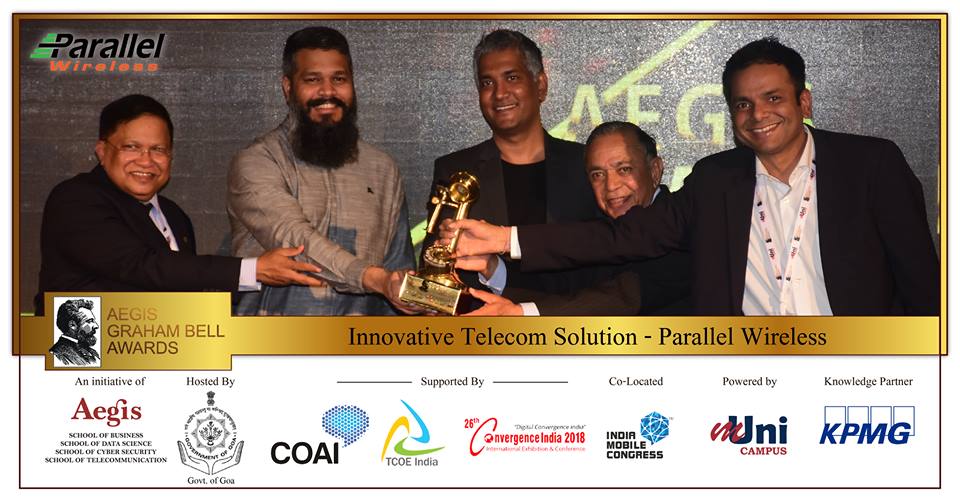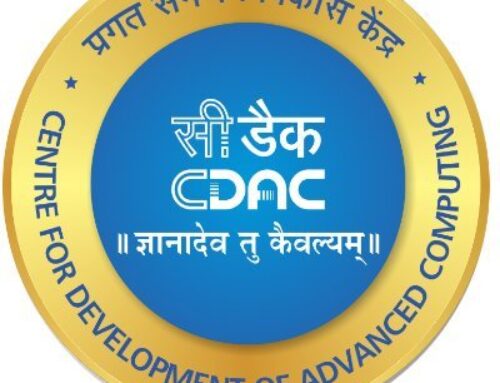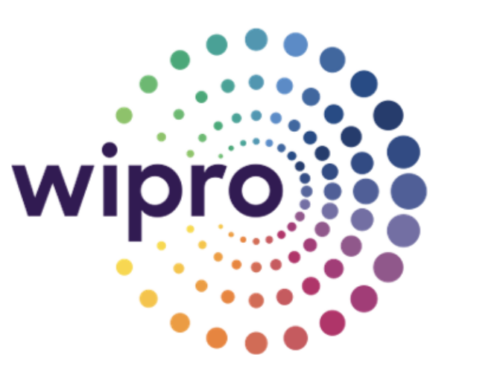GOA, 1st February 2019: Aegis Graham Bell Award 2018 announced that Parallel Wireless has won in two categories “Innovative Telecom Solution” and “Innovation in Smart City” for their innovations in 2G/3G/4G/5G unified software platform (HetNet Gateway) and Parallel Wireless’ Converged Wireless System multi-technology base station respectively. Parallel Wireless has been applauded as winner at the 9th edition of Aegis Graham Bell Award 2018 hosted by Government of Goa at Entertainment Society of Goa, Panaji.
“We are passionate about helping the service providers in improving rural connectivity without compromising profitability. Our groundbreaking solutions and products help telcos to address the network and market challenges cost-effectively. We are honored and excited to receive Aegis Graham Bell Awards in two categories. These awards are special because it is the second year in a row that we have been recognized for innovation by Aegis Graham Bell Awards. These awards will further motivate us to innovate to enable service providers to connect the unconnected,” says Kundan Das, Director APJC Business Development, Parallel Wireless.
“Parallel Wireless is winning Aegis Graham Bell Awards for the second year, last year as well they won in “Innovation in Telecom Infra” category and this year in these two different categories. This shows their consistency and dedication for the need to improve and innovate. Congratulations to Parallel Wireless and we look forward for more innovations from them, good luck” – Bhupesh Daheria, Jury & Founder, Aegis Graham Bell Awards; CEO, Aegis School of Business, Data Science, Cyber Security & Telecom.
Aegis Graham Bell Awards (AGBA) has been promoting innovations in the ICT domain. AGBA has been rewarding those who have been contributing in these fields, for 8 years with a vision to foster and stimulate innovators for India to become the nucleus of innovations.
As the future of 5G is still being defined, there is much uncertainty around what 5G will actually be once it comes to fruition. If the main goal for 5G is to improve people’s lives, the development of 5G should consider the various use cases for 5G. Additionally, 5G networks should seek to address the challenges faced by current 2G, 3G, 4G network architectures.
Varying network maturity in different regions requires a solution that can address older (2G, 3G, 4G) generation technologies while managing future (5G) networks – what will work for the more advanced market likely won’t be a good option for less developed markets. One example of this is with the Indian market, which still largely uses 3G networks and is still making investments into 4G. If 5G is set to be another air interface introduced within the next five years, does this mean that networks in India and other countries with older generation networks will have to simply skip over 4G? Another example of this is in Western European markets where 4G LTE investments are projected to increase dramatically over the next few years.
HetNet Gateway (HNG) is the next generation virtualized 2G/3G/4G/5G software platform from Parallel Wireless. First deployed by EE in 2014, Telefonica in Latin American markets in July 2016, HetNet Gateway has since been deployed around the globe to provide cost savings, network simplification and helping to meet subscriber demands today and tomorrow for Optus in rural Australia, Cellcom in North America Canada, Vodafone in India as well as in many networks around the globe. Because this solution is multi-technology (2G, 3G, 4G, 5G, and Wi-Fi), it allows operators to transform their networks today while preparing for the networks of tomorrow.
For smart cities, the award-winning solution essentially uses balloon to provide temporary coverage in an area, which might require connectivity because of an emergency or additional network capacity because of an event. A standalone LTE/4G base station with integrated wireless backhaul on the balloon is supplied with power from the ground. It is self-configurable and thus doesn’t require any local intervention. The height of the balloon and the power of small cells decides the area that is covered by the radio frequencies emitted from the small cell. Parallel Wireless Small Cell and Wireless Backhaul module link back to its HetNet Gateway.
About Parallel Wireless:
Parallel Wireless is on a mission to connect the 4 billion unconnected people by reimagining the networks. The unified end-to-end 2G, 3G, 4G, and 5G Open RAN platform enables operators to connect things and people at home, work, play and in emergencies by deploying any G cellular networks as easily and as cost-effectively as enterprise Wi-Fi whether for rural, enterprise, public safety, M2M, Smart Cities, or dense urban. The company is in production on six continents and engaged with many leading operators worldwide. Parallel Wireless’ innovation and excellence in multi-technology open virtualized solutions has been recognized with 50 industry awards. For more information, please visit www.parallelwireless.com.
About Aegis Graham Bell Awards:
Aegis School of Business, Data Science, Cyber Security and Telecommunication has established the Aegis Graham Bell Award as a tribute to the father of telephony, Alexander Graham Bell. This Award is intended to promote innovations in the Information and Communication Technology (ICT) to provide recognition for outstanding contributions by the innovators. The award is powered by mUni Campus. It is organised with the support of Cellular Operators Association of India (COAI), and Telecom Centres of Excellence (TCOE) India, a public-private partnership initiative of DoT with 08 Centres at premier academic institutes (06 IITs, IISc and IIMA) of the country, each supported by a Telecom Service Provider and Convergence India and KPMG as knowledge partner. For more information, please visit: www.bellaward.com
For more information, please contact:
Shweta Chavan | Corporate Communication | Aegis Graham Bell Awards | 8433969263 | shweta@bellaward.com







